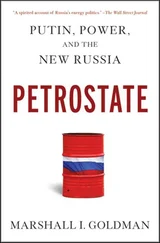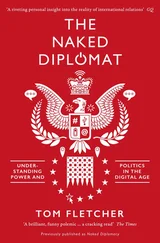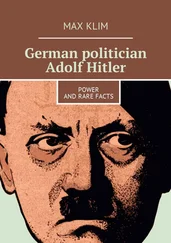We then bring the samples back to Leer, where we confer with the Commissioner40 there. Immediately after that, we meet, quite by accident, Dr. Riek Machar Teny and his wife Angelina Teny. Dr. Teny is the controversial vice president of Southern Sudan, which was accorded autonomy in 2005. Ms. Teny has been since 2005 the Minister of Energy in the joint regime set up in 2005 to unite Northern and Southern Sudan on an interim basis. It is a strange encounter. Riek Machar chats a bit with us. He inquires into our fact-finding mission. Notwithstanding this, we have the impression that we are banging our heads against a wall. What we have to say doesn’t really interest him, or so it seems. One reason for our skepticism may well be his ostentatious display of power, which reminds us of the suffering of the people in Southern Sudan.
Riek Machar’s wife is a highly regarded politician. She stated at a conference in 2006, held in Juba, that there was a problem with the produced water produced by the extraction of oil. As she mentioned, this crisis was particularly pronounced at the old drilling sites in the north. Companies launching operations in the South were on their ways to handling this.41 That might have thus been one possible reason for her having kept quiet while we related our suspicions.
On the following day, we fly back to Nairobi, where we hold on the subsequent day a press conference. At it, we present the preliminary findings of our expedition and call upon the government of Sudan to take effective action. The statements given by eyewitnesses that we have gathered suffice to prove the existence of a massive damaging of the health of local residents and the environment.
We then return to Germany, where we deliver on February 18th the samples of water to a renowned laboratory, which is to scientifically analyze them. The results confirm our assumption. The water taken from the wells in Rier turns out to be strongly contaminated. The analysis revealed a total amount of salt of 6,600.50 milligrams per liter of water (mg/l) and its contamination with strontium of 6.7 mg/l. The water in this sample evinces nitrates amounting to 81.6 mg/l. The USA’s Environmental Protection Agency’s recommended ceilings42 for the total amount of salt permissible in potable water has been set at 500 mg/l. The sample investigated thus exceeds this ceiling 13-fold. The ceiling for nitrate has been established to be 10 mg/l and has thus been exceeded 8-fold. A concentration of nitrates in such amounts can cause infants to take seriously ill. The failure to treat these illness can lead to death. The findings from points of sample collection further afield do not give rise to concerns.
The result is terrifying, since the commercial-scale production of oil in the region has after all just been launched. It has yet to be fully ramped up.43 The failure to take countermeasures will give rise to a horrible environmental catastrophe in this area. The results of the analysis of the water samples are presented in a press release that forms the subject of a large number of reports in the media in Germany and abroad.
*
→ Further information:
Where does the contamination come from?
Water is of elementary importance in drilling. It serves as the basis for rinsing solutions.44 This drilling fluids plays a key role in the drilling process because it ensures a disturbance-free pursuing of it. “Drilling fluids” refer to the liquids circulating during the drilling of the hole. These liquids transport the ’cuttings’ upwards. They also cool the drill bit and shaft, and secure the wall of the drill hole against collapsing. Chemicals are added to the rinse solutions when drilling in non-firm sediments, which in turn characterize the area being described.45 These chemicals force the formation of a filter crust that seals the porous layers of the rock.46 This prevents a collapsing of the drill hole. The amount of drilling fluids is to be minimized. The solution permeates the porous layers until the point that they are sealed. The solution has another function. It is to preclude an uncontrolled seepage of fluids or gases from the rock into the drill hole. Reasons of costs also dictate the configuration of the solution’s accordance with the respective geological conditions.
To prevent the corrosion of the drill shaft, an oxygen-free environment has to be maintained. The danger of corrosion of steel is negligibly small at pH values of between 10 and 12.5. To accordingly increase the pH values, sodium, calcium and potassium alkalis are added to the solution. In cases in which the pH values are lower in the solution, phosphates, borates, chromates or special tensides have to be added to the solution. The alkalis include KCI (stabilizes clay) and potashes (K 2CO 3).
A number of solution additives have two or more functions to fulfill. The drilling fluids’ composition accordingly varies according to the material being drilled: be it bedrock, loose rock, sediments or sedimentary rock. Clay and argillaceous rock are found in and around Thar Jath. This requires the stabilization of drilling holes through the addition of sodium chloride, calcium chloride or potassium sulfate. These additions replace the sodium ions found in clays with potassium or calcium. The result is the reduction of the clays’ absorption of water. Potassium-based drilling fluids are especially important when drilling in clays and argillaceous rocks. This is because they optimally prevent the absorption of water—due to the anti-osmotic characteristics of potassium ions—in formations whose makeup is unknown.
The extremely great potential dangers emanating from the use of chemicals in drill drilling fluids cause it to be strictly regulated by internationally-applicable guidelines. Augmenting this peril is another technique employed when extracting oil. Highly-concentrated salts-containing solutions are injected into the oil deposits, so as to increase the pressure in them. The crude oil and the previously-injected salts-containing solutions are pumped to the surface, where the crude oil is separated from the so-called “produced water”. The extraction of each liter of crude oil requires the employment of from 3 to 9.5 liters of produced water47 — an incredible amount. This produced water often has a higher content of salt than does ocean water. The produced water also often contains noxious metals and radioactive materials.48 The general practice is to inject the produced water—via another injection hole—deep enough into the ground, with this meaning its being transported to layers of rocks that are far away from potable water.49 Should, however, the produced waster be disposed of via in-feeds into surface waters, or via shallow drilling into layers containing ground water, the risk arises that this polluted water will—via wells—be incorporated into humans’ food cycle.
That Sudan has this problem has been well-known for quite some time. This problem was the topic at a conference held in Juba in 2006. The conference was about revamping the production of oil in the era commenced by the conclusion of the peace agreement, and marked by a possible participation in the industry by Southern Sudan.50 This conference showed that Chevron, the US petroleum giant, used the proven—but expensive—procedure ensuring the safe disposal of produced water upon its drilling of Sudan’s first oil wells in the period until 1983. Chevron injected the contaminated water into deeply-laying layers of ground. It was Chevron’s successors in the country’s oil industry that developed the methods yielding the damaging of the environment now becoming apparent to all.51 The oil field at Thar Jath is estimated to contain 149.1 million barrels.52 A barrel of oil is comprised of 159 liters. Taking a mean of 7 liters of produced water per liter of oil, and extrapolating that to account for the entire potential of oil to be transported yields the figure of 1,659,483.3 million liters of waste water to be disposed of.
Читать дальше












